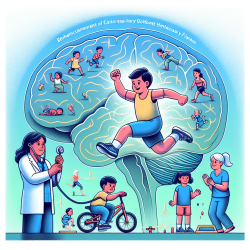Introduction
As practitioners dedicated to enhancing the outcomes of children, understanding the role of physical health in cognitive development is crucial. Recent research has illuminated the impact of cardiorespiratory fitness (CRF) on the brain, particularly concerning white matter hyperintensities (WMH), which are linked to cognitive decline and Alzheimer's disease (AD). This blog explores the findings from the study "Cardiorespiratory fitness attenuates age-associated aggregation of white matter hyperintensities in an at-risk cohort" and discusses its implications for child development.
The Study at a Glance
The research conducted by Vesperman et al. (2018) focused on how CRF can mitigate the age-related accumulation of WMH in individuals at risk for AD. The study involved 107 cognitively unimpaired, late-middle-aged adults who underwent magnetic resonance imaging (MRI) and graded maximal treadmill exercise testing to measure CRF. The findings revealed that higher CRF levels significantly attenuated the adverse effects of aging on WMH.
Implications for Practitioners
While the study primarily targeted an older demographic, the implications for child development are profound. Here’s how practitioners can leverage these insights:
- Promote Physical Activity: Encourage children to engage in regular physical activities that enhance cardiorespiratory fitness. Activities like running, swimming, and cycling can be integrated into daily routines to support brain health.
- Early Intervention: Early interventions focusing on physical fitness can potentially delay or prevent cognitive decline later in life. By instilling healthy habits early, we can contribute to long-term brain health.
- Holistic Development: Recognize the interconnectedness of physical and cognitive development. Encourage a balanced approach that includes physical fitness as a core component of educational and developmental programs.
Encouraging Further Research
For practitioners interested in advancing their understanding, further research into the relationship between CRF and cognitive development in children is encouraged. Investigating how physical fitness impacts brain structure and function during critical developmental periods could provide valuable insights into optimizing child outcomes.
Conclusion
The study by Vesperman et al. underscores the importance of cardiorespiratory fitness in maintaining brain health and mitigating age-related cognitive decline. By applying these findings to child development, practitioners can foster environments that promote physical activity and holistic growth, ultimately enhancing cognitive outcomes for children.
To read the original research paper, please follow this link: Cardiorespiratory fitness attenuates age-associated aggregation of white matter hyperintensities in an at-risk cohort.










